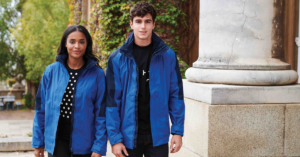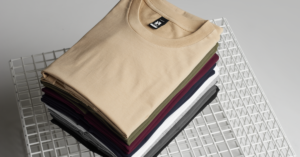Research shows that in 90% of cases, ROI (Return of Investment), following an event or exhibition, stems from the organisation’s follow-up campaign. By now it is likely that your event or exhibition has made a great impression on both existing and new clients. The objective of attending or hosting these events or exhibitions was to position and establish yourself and your brand among the target audience, in addition to demonstrating exactly how you differ from your competitors. The next stage of your campaign is crucial,
regardless of how successful your initial campaign may have been. In this next stage, you need to retain the interest of both new and existing clients. In the following booklet, we have outlined some of the best practices for any organisation, to ensure their follow-up campaign is a success.
1. Planning
During events and commercial exhibitions, it is common to establish new contacts, whether it be new clients or even potential strategic partners. Before attending an event it is essential to identify potential categories into which these contacts may belong. Therefore, we advise creating a networking-strategy with your marketing or communications department preceding an event. The idea of this networking-strategy is to create various
e-mail communication templates for each potential contact with which you may engage at the event.
Traditionally these categories include:
- New/Existing clients
- Event Sponsors
- Event media partners
- Press attending the event
- Strategic partners
- PR companies
- Photographers
- Suppliers and more…
2. Contacting
Following an event, your follow-up should be prompt. We recommend touching base with newly-established contacts from the event within 1-3 working days. From our experience, the first three days following a networking event convey professionalism and sincerity. Ensure data is quickly dealt with.
We recommend engaging with existing contacts first, as these contacts require less information about your company or brand than newly-networked contacts.
Following on from this we advise that you establish communication with new contacts within three working days following an event. This may be in the form of an e-mail campaign, targeting each of the aforementioned contact-categories
When embarking on e-mail campaigns, one of the most important aspects, whether it be a newsletter or even a general “thank you for subscribing” e-mail, is to have links back to your website. This way new and existing clients can learn more about your company or brand, and for this reason, it is essential that landing pages are regularly updated with relevant content and information. Landing pages are, in a way, the most important pages to every e-mail campaign. They generate a client’s first impression and will determine whether or not they will proceed to do business with your company or
brand. It is essential to have up-to-date information, images and offers, with
content that will invite clients and new partners to your brand and inform them of what you and your brand are about. So, even with a general “thank you for joining us” e-mail following an event or exhibition, it is important that they generate the right first impression and inform them of ways in which your company can benefit them.
3. Checking Landing Pages
At trade shows, many catalogues are discarded by clients and visitors because of their weight. Free literature gets mixed up with other exhibitors at the event. Nowadays it isn’t as effective to be using paper-based means of marketing when compared to electronic media, however, catalogues produced in both of these ways, it is essential that both the front and back
cover’s designs are enticing. When appealing to stakeholders it is important to include specific marketing materials that senior organisations always ask for before they even consider doing business your brand, such as:
- Press releases
- Company profile
- Summary of services and products
4. Thank-you Bags
Promotional products may also be used, but try to think outside of the usual pen or mouse mat, depending on where you exhibited and the audience you’re trying to appeal to, so depends on the promotional merchandise.
THANK-YOU BAGS SHOULD INCLUDE:
- Thank-you note
- A brief overview of your most popular products
- Sales personnel business cards
- Press pack – with your most impressive campaigns to date
- Invitation to future scheduled exhibitions
- Social media links
- Reports
- Promotional products
- Seasonal gift
- Client testimonials
5. Photography and Social Media
Photography at events should be distributed across all social media channels. Social media is one of the most effective means of marketing and advertising. #SocialMedia
Photography is reusable and reinforces your brand, clients and partners may reuse this on their own channels. It is also a great idea to include your photography in your thank-you e-mails, it invites the client into your brand.
Our hope is that these best practices for post-event follow-up help you to make the most from your sales and marketing efforts, so you can maximise your event ROI, and establish your brand’s professionalism and differential.
Good luck. If there is anything we can help you with you before your next event, or this campaign follow up then please do contact us.




